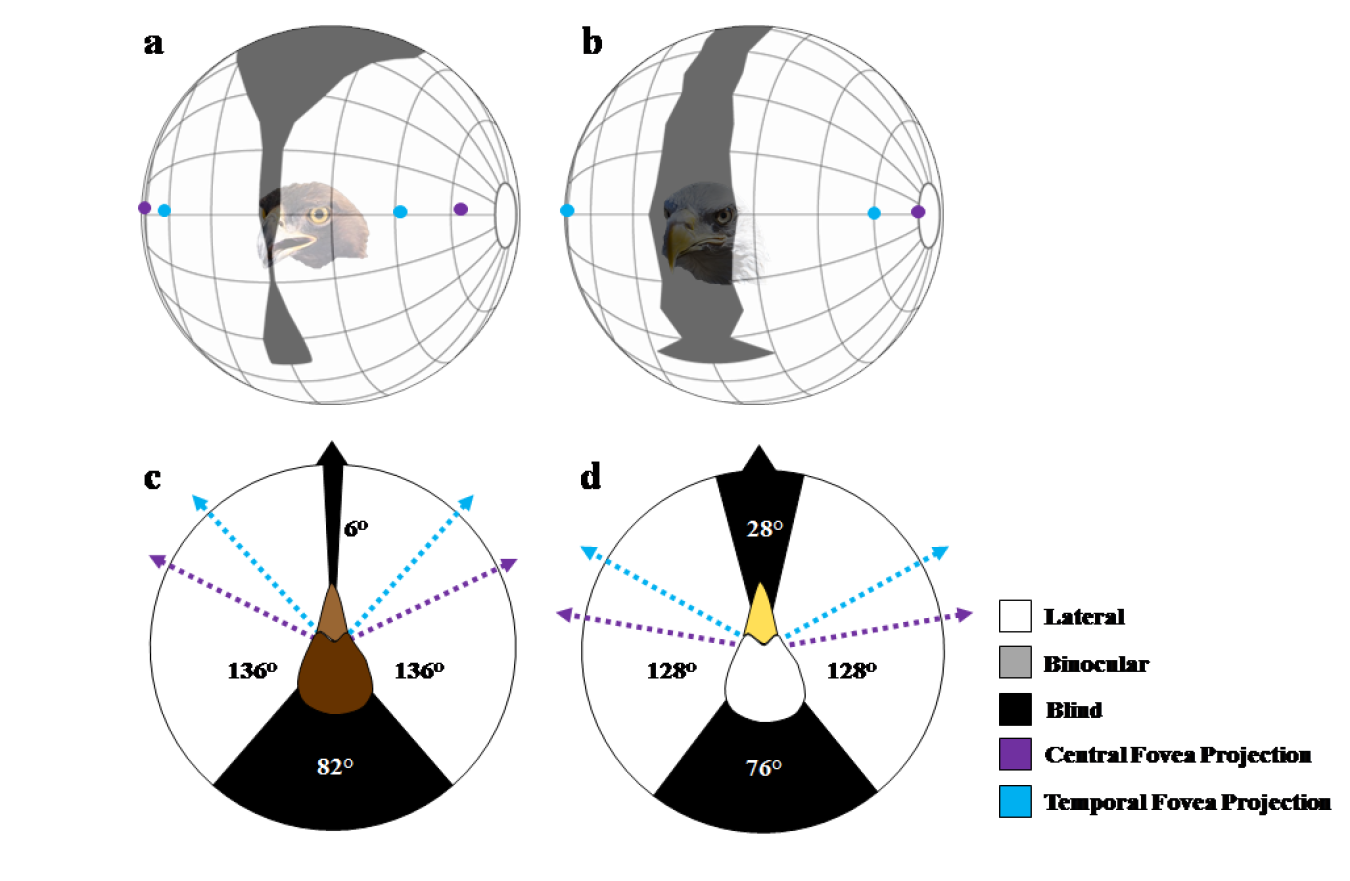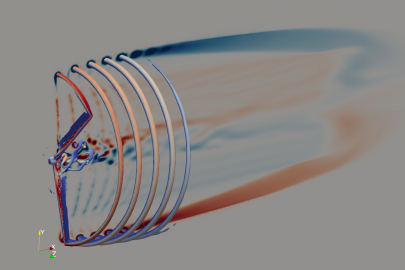University researchers examine eagle physiology to inform and improve eagle deterrents.
Wind Energy Technologies Office
October 13, 2020University researchers examine eagle physiology to inform and improve eagle deterrents
Purdue University (Purdue) and the University of Minnesota (UMN) are studying the visual and auditory capabilities of bald and golden eagles to help improve the effectiveness of deterrents used around wind energy facilities. Findings from this research, which is funded by the Wind Energy Technologies Office (WETO), will be made available to eagle deterrent technology developers.
Bald eagles were removed from the endangered species list in 2007 after a strong population recovery. Golden eagles were not listed, but both eagle species are federally protected under the Bald and Golden Eagle Protection Act (BGEPA), which prohibits the killing (or “take”) of eagles, unless permitted. This act requires that wind energy developers and operators do everything they can to minimize risks to eagles through methods such as careful siting, deterrents, or sensors that monitor for incoming wildlife and shut down wind turbines if an eagle approaches.
One way to reduce risks is to develop technologies that produce sound or a visual cue to deter eagles from entering the airspace around wind turbines. To develop highly effective deterrents based on sound or visual stimuli to which eagles are most sensitive, Purdue University explored both eagle hearing and vision, whereas UMN researchers studied eagle hearing and identified possible surrogate species with hearing capabilities similar to bald and golden eagles.
Purdue University: A Blind Spot Near the Top of Eagles’ Heads
The Purdue research team worked with seven raptor rehabilitation centers to evaluate eagle hearing and vision ranges. They found that both bald and golden eagles have a blind spot near the tops of their heads (Figure 1) that hinders the birds’ ability to see a wind turbine ahead of them if looking downward (e.g., while hunting). This finding supports the need for a deterrent that is sufficiently alarming to an eagle to cause it to look up when hunting.

Figure 1. Visual field configurations of the golden eagle (left) and bald eagle (right). The Purdue University team found both species of eagles have a blind spot near the tops of their heads (bottom row). Illustration courtesy of Purdue University
The Purdue team also found that it is highly unlikely that golden or bald eagles can detect ultraviolet light. They identified candidate colors (blue/indigo and orange/red) that would be most visible to eagles against various backgrounds.
Furthermore, golden eagles exhibited a higher proportion of stress-related behaviors to visual signals than to sound or light-plus-sound signals. Bald eagles showed a higher proportion of stress-related behavior to light-plus-sound signals. In other words, golden eagles are more likely to respond to visual signals, whereas bald eagles are more likely to respond to a combination of sight and sound. Both species showed some level of adaptation to stimuli over time, indicating the need for additional, randomized visual and auditory signal testing.
Purdue researchers concluded that the auditory systems of bald and golden eagles were sufficiently different to warrant species-specific deterrent signals. They discovered that:
- Both species responded strongly to tones between 0.5 kilohertz (kHz) and 5 kHz—roughly, the notes on the right half of a piano keyboard.
- Bald eagles’ auditory systems were much better than golden eagles’ at processing complex sounds with dynamic, rapid changes in amplitude or frequency modulation.
- In the presence of ambient noise, such as that of a wind turbine, sounds with rapid frequency or amplitude modulation were not as easily masked by the ambient noise.
The Purdue research team concluded that these types of signals would be good candidates for further testing with bald eagles—but that deterrents for golden eagles should be complex tonal harmonics or modulated sounds that do not change very rapidly.
University of Minnesota: Eagles Can Hear Frequencies Ranging Across Four Octaves
The UMN research team studied raptors admitted to the university’s Raptor Center for treatment and worked with Sia: the Comanche Nation Ethno-Ornithological Initiative in Cyril, Oklahoma, to assess eagle hearing ranges. Once data were collected, they developed a suite of audio test signals and worked with eagles at the Raptor Center to evaluate which of the signals generated the strongest response.
Researchers found that eagles can hear over a frequency range of at least four octaves, centered on 2 kHz, which is roughly a “B” note on a piano, three octaves above middle C, with an upper limit between 6 kHz and 10 kHz at 80 decibels, and a lower limit that likely extends below 0.2 kHz.
In addition to evaluating eagles’ physiological responses to synthetic tones, the research team evaluated the auditory properties of eagle vocalizations to better understand how their vocal repertoire might be used in a deterrent. The findings suggest that companies designing eagle deterrents should consider varying frequency and volume patterns to achieve the strongest and least-habituated responses. They also recommend against broadcasting sound outside the observed responsive frequency band of bald and golden eagles to avoid contributing unnecessarily to existing sound-pollution levels.
University of Minnesota: Red-Tailed Hawks May Be Auditory Surrogates
After exploring the usefulness of red-tailed hawks as potential surrogate species for field testing auditory deterrents, the UMN research team concluded that the hawks’ auditory systems are similar enough to bald and golden eagles that they may be used as surrogate species when testing new deterrent devices or signals.
This finding is important because of regulatory protections afforded eagles under the BGEPA. Being able to test on red-tailed hawks will provide a significant benefit to technology developers looking to test the usefulness of their systems prior to field trials. However, researchers noted that testing with eagles in a real-world environment, in addition to any testing on red-tailed hawks, will be critical to any deterrent validation study.
The final technical report on this research is pending publication. The University of Minnesota has published one article about their research in the Journal of Comparative Physiology.
Explore previous editions of the Wind R&D Newsletter or browse articles by topic:










